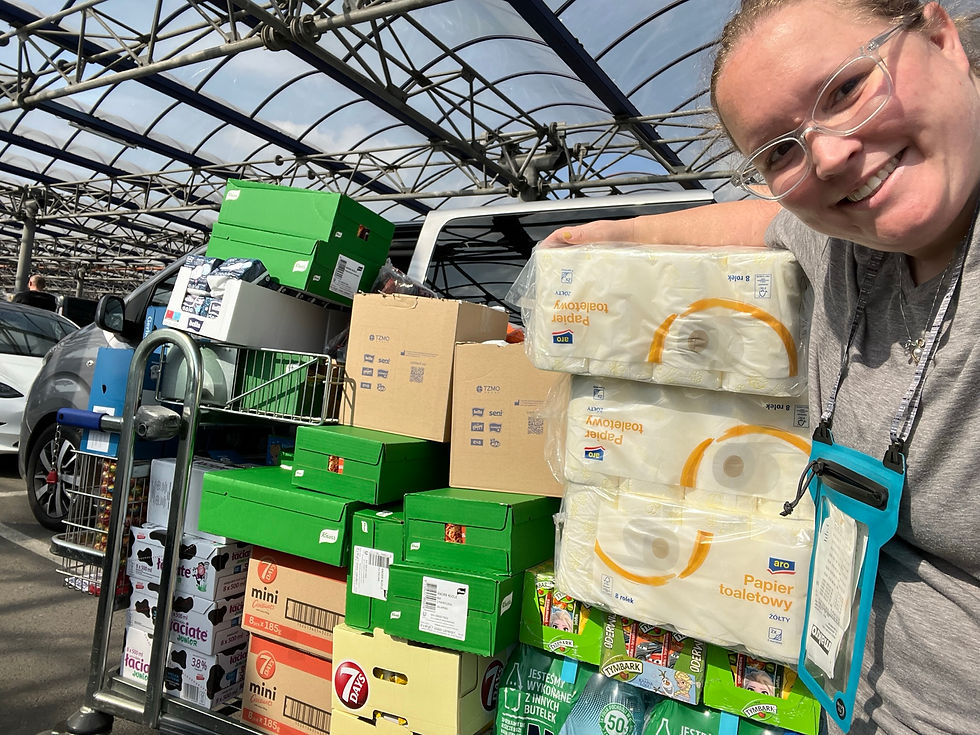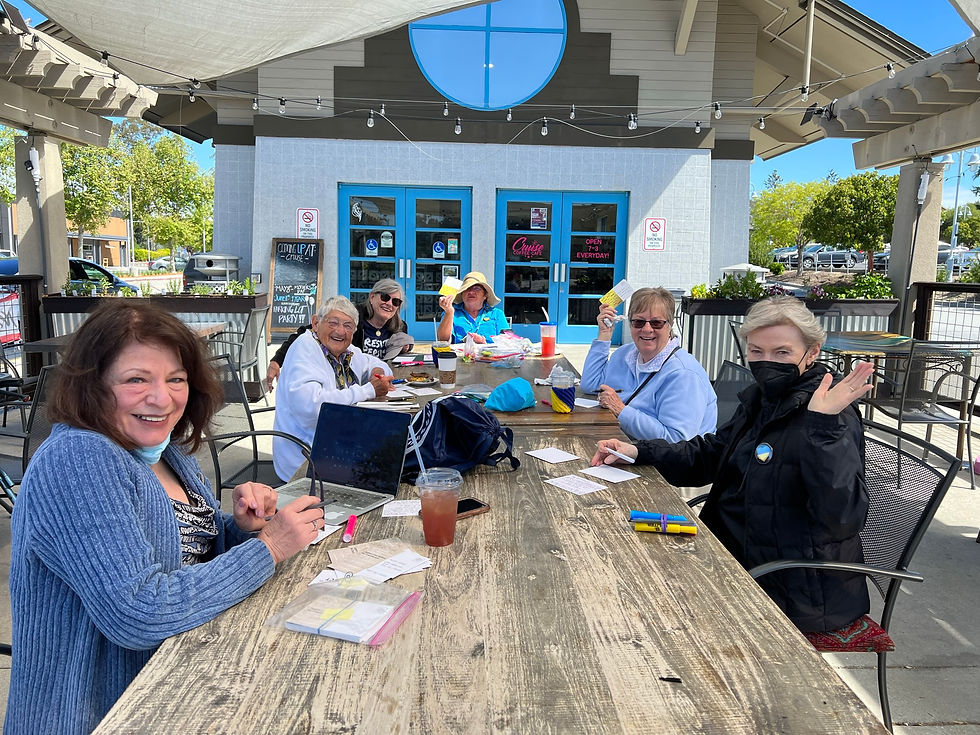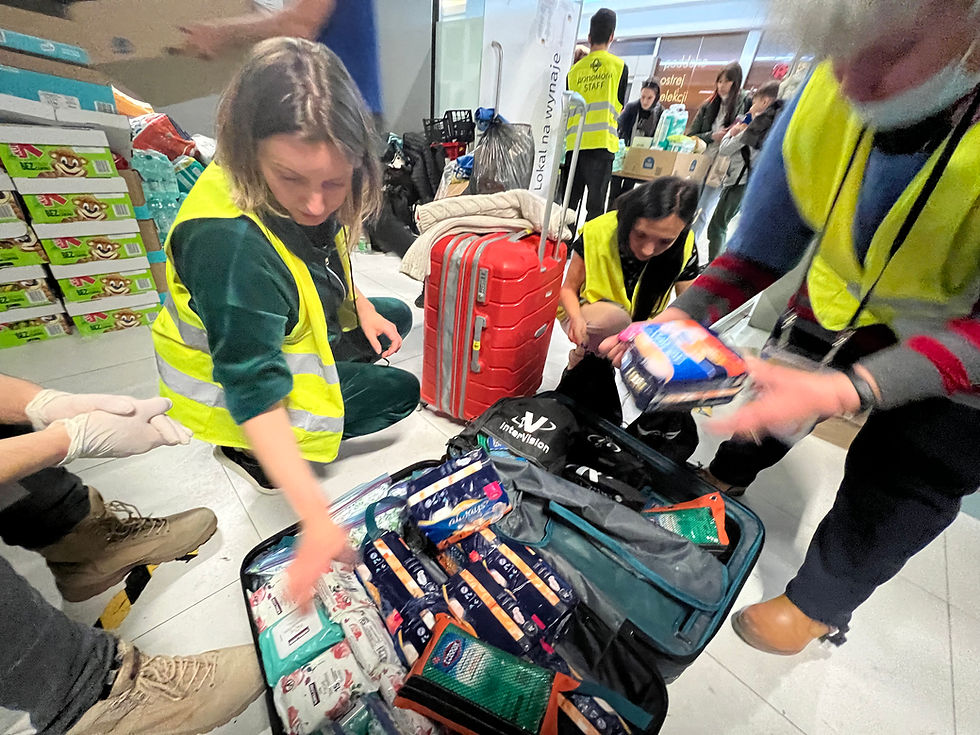Get Local With Voluntourism
- Fat Mama

- May 13, 2022
- 8 min read
I’ve talked extensively over the last three months about Voluntourism and the amazing benefits of traveling the world to do more than relax on a beach. When done right, being a Voluntourist is a triple-threat in the travel industry. A real WIN-WIN-WIN. How?
Keeping these 3 principals as top priorities, any traveler can easily become a Voluntourist:
Support the local population however you can wherever you travel.
Be a positive impact on the environments you explore.
Always learn about the history and cultures of the places you visit.

Lately, for this Fat Mama, that has been Poland, and more specifically, the city of Krakow.
I supported the local population by actively participating in the tourist economy by choosing a hotel in Old Town Krakow, eating at local restaurants, and shopping at outdoor markets. The local environment was abuzz with humanitarian activity, providing relief for Ukrainian refugees, which I eagerly supported through volunteer work. And through talking with locals, working with aid groups, and learning about the history and culture of Poland (and their close relationship with Ukraine) I better understood the crisis I was there to aid.

But these 3 principals can be applied to ANY trip, adventure, excursion, or vacation to add greater meaning and depth to your travels. This is just one way you can make a trip into an experience!
Take A Hike

Over the summer, many of us will head out into the great outdoors to explore State and National Parks. This is a great opportunity to practice being a Voluntourist. How? Let’s break down the 3 principles.

1. Who is the local population in this case? Why, it’s Park Rangers, Interpreters, plants, and animals, of course! There is no better way to support them all than being a good participant in the park; consider:
Making a donation (even a dollar goes a long way).
Participating in a ranger program.
Share photos and stories about your experiences.
2. In this case, being a positive impact on the environment you explore is easy!
Stay on marked paths and roads.
Pick up trash and garbage, even if it isn’t yours (always pack your trash).
Follow the rules set by the park for your safety and that of the plants and animals.
3. State and National Parks are a great place to learn about the history and culture of an area, as this is part of their reason for existing.
As you travel around the park, seek out interpretive sites or materials and interact with the displays.
These will be placards, educational boards, viewing stations, maps, ranger programs … anything designed to teach you about the geography, plant and wildlife, or history of the park.
Often State and National Parks will run programs for kids. You can find out about these at Ranger Stations, on their websites, or in the daily/weekly newspapers parks publish.
Congratulations! Ducky friends you just learned how to become a Voluntourist right in your own community. After all, you don’t have to go all the way to a State or National Park to be a Voluntourist. Try applying this same approach to an historical point of interest, nature trail, or community park in your own neighborhood.
Voluntourism can ADAPT to Any Situation
I recently received an email from my good friend Julie Coffin introducing me to the Lutheran Immigration and Refugee Service (LIRS) and the work they are doing to support Ukrainian refugees. In the email LIRS discusses their ADAPT model: Act, Donate, Advocate, Pray, and Teach of service, which I really liked and will appropriate now.
Being adaptive is an important part of any travel plan. After all, things never go quite as you expect because it is impossible to plan for every contingency.

What is the saying? “Woman plans, God laughs, and man follows along dutifully.” That sounds right. But being adaptive is particularly important when doing Voluntourism because you must put the needs of those you are helping before your own thoughts and notions about volunteering (and what that “should” look like).
However, always being able to ADAPT, no matter the situation, will help you contribute positively as a Voluntourist. I particularly like the ADAPT philosophy to aid work put forth by LIRS because it applies so well to Voluntourism, be it local within your own community or abroad on a trip or anything in between. So let’s break down the LIRS ADAPT model, and make it a little more secular for those of us who are so inclined.
To learn more about LIRS and their ADAPT model here.
When planning a Voluntourist trip, be it a staycation or a globe-trekking adventure, figuring out just how to meet the 3 principal goals can be daunting. Remembering to ADAPT makes things much easier. By finding ways to Act, Donate, Advocate, Ponder, and Teach you can travel with confidence knowing that your ADAPTive approach will help you to always be of service.
Here are just a few ideas how you can ADAPT to any Voluntourist situation:
Act: From small acts of kindness to grand gestures, doing something for a cause that you believe in is powerful. Luckily, an act can be almost anything. Talk to friends and family about the cause. Share a post on social media highlighting the work being done. Attend a demonstration and invite a friend. Go on an aid trip. Send a thank you card to volunteers. Your actions, big and small, will be more appreciated and impactful then you will ever know.

Donate: This doesn’t have to mean “just send money;” though, every non-government organization desperately needs funds to accomplish the humanitarian work they support. From donating canned food, to buying supplies on a refugee Amazon Wishlist, to donating your time and labor for a good cause … the ways you can help, give, and volunteer related to donations are endless (and don’t have to cost a thing).
Advocate: “What do we want?” “Action!” “When do we want it?” “Now!” Being an advocate for a cause is a wonderful part of the ADAPT model that lends itself well to Voluntourism. After all, one of the best ways to advocate for a cause is to elevate the voices of people on the front lines of the work.

Through a wide variety of expressions, you can be an advocate for your chosen cause. Be it letter writing campaigns, sharing about your own experiences visiting threatened environments or people in need, or recommending people join you in supporting/demonstrating/donating/volunteering for the cause of your choice, you can be an advocate. Technically, every time you visit a place, post about it to your social feeds, and encourage other people to travel/try/buy/reserve the same experience you have just had, you are being an advocate. So why not advocate for good as a Voluntourist?
Ponder: Have you played the game 20 Questions? You choose a person, place, or thing and your friends have to guess your choice by asking you 20 questions or less. I like to think of “Ponder” like the 20 Questions game, but in reverse. As a Voluntourist, traveler, or activist, you should always take time to ponder, think, and learn about the people, places, and things you are helping and visiting. By learning about the people, thinking about the history, and truly pondering the things that have happened leading you to visit a specific location at a specific time, you will have a clearer understanding and become more able to ADAPT.
Teach: Now, if you have followed the ADAPT model … if you have acted, donated, advocated, and pondered … then you will start to get people responding to you with questions. EXCELLENT! You’ve done a great job and now you can come full circle with the ADAPT model and answer people’s questions by teaching them all what you have learned. If you can tell people, why you chose to act, explain how donations make a difference. Impress upon them the importance of advocacy. Describe the significance and impact of the cause. Then you are ready to teach … and probably already have been without even knowing it.

After all … by taking action, donating, advocating, and pondering the Voluntourist cause of your choice, you have already been teaching people and sharing your ADAPT journey with them.
When Voluntourism Becomes Political
June 30th marks the half-way point for the year. We will officially be 6 months through the year and have 6 months left to go before we celebrate collectively revolving around the sun one more time! But as June 1st creeps closer, I start to panic about the year being half done. I mean, where did the time go? Once June 1st is here then its only a month to the year's halfway mark, then summer craziness starts, and OMG the holidays are right around the corner. Are you panicking? I'm panicking!
It's about this time every year, I start to look at my travel calendar. Sometimes I look back and think, “Goodness, we did a ton already this year." But most of the time I think, “Ah! I only have 6 more months to travel before I close the books on another year. I NEED MORE TRAVEL!” And really, there may be no better time to travel in the States then during the summer and fall.

This year is interesting because for those of us looking for a really meaningful Voluntourism opportunity that will take us out of our community but not outside of the country, there are some unique opportunities available. For example, have you ever thought about Volunteering in another state? What about using the ADAPT model to support a threatened cause near and dear to your heart?
As the late, great John Lewis said, "Get in good trouble, necessary trouble, and help redeem the soul of America." Well, let me tell you, ducky friends, this summer and fall it feels like there is much redeeming that needs to happen. Voluntourism just might be the answer.
So in the coming months, if the news headlines have you down, if you find yourself thinking of current events in terms of memes and apocalyptic jokes. if you feel an itch to do something but don’t know what you can do … Consider applying the ADAPT model to protecting democracy through Voluntourism. Take a road trip to DC and protest in front of the Supreme Court. Hand out food and water at impacted polling places this November. Organize a community bike ride to raise awareness about reducing our carbon footprint.

If you are politically minded, there will be tons of ways to ADAPT and get involved as a Voluntourist all over the nation. No matter the cause you are passionate about, no matter your political affiliation, there is “good trouble” to get into and Voluntourism is the perfect avenue.
Fat Mama Tip: Need some guidance on how you can support “little d” democracy as a Voluntourist? Check out the non-partisan organization Protect Democracy for ideas on how you can get involved.
Voluntourism … The Best Way to Travel

As a lifelong traveler and a past educator (Can you ever really be a past educator? I feel like teaching is something that once you start you never stop.), I feel very drawn to Voluntourism because it gives so much meaning to even the most frivolous vacations. Now that I have learned how to be a Voluntourist, now that I have done it, now that I am teaching others how to do it, I really can’t think of a better way to travel.
After all, being a Voluntourist is still about being a tourist. Just because volunteer comes first doesn’t mean you can’t stay in a fancy hotel, or have an oceanside massage, or go wine tasting in the heart of France while being a Voluntourist. There are so many aspects of volunteering, aid work, advocacy, activism that ANY vacation can easily support the Voluntourist model.
I think Voluntourism just might be the best way to travel. It’s certainly the easiest way to make any trip into an impactful experience.
Keep Calm and Quack On!




Comments